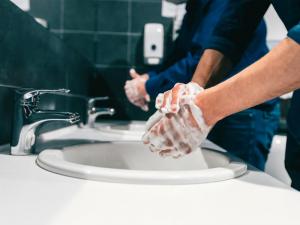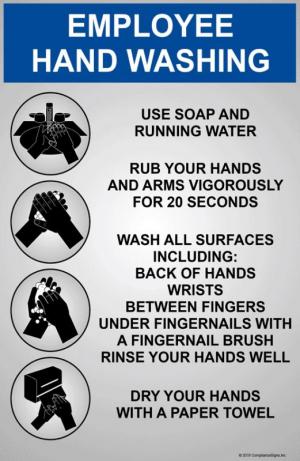Clean & sanitary: Everyday routines for good restaurants
As we slowly come off of the craziness of the last year, I still hear about people who are wary of restaurants in terms of safety. It’s important to remember that all this discussion of gloves, plastic shields, sanitizing liquids, etc., is NOT a new thing for food service professionals. Successful restaurateurs - the people who have suffered most because of this virus scare - are actually those who know the most about keeping things clean. I’m talking about properly run restaurants, and the great majority of our eateries in the Cape Region fall into that category.
Few things annoy me more than social media drivel that questions the safety of restaurant food – especially takeout food. The concept of washing hands, sanitizing surfaces, and being aware of what you touch is and always has been a primary focus for well-run eateries. In fact, sanitation is a front-burner concern for any restaurant that wants to stay in business.
Volumes of regulations exist that grew out of real-life encounters with foodborne pathogens. From the moment a seed is planted or an animal is born (or hatched), Hazard Analysis and Critical Control Points (HACCP) are monitored to minimize the risk of contamination. Educational programs such as ServSafe (mandatory for kitchen management personnel) address specific situations where food safety could be threatened by temperature, cross-contamination (e.g., between raw meats and “ready to eat” items like lettuce) and exposure to anything that could harbor germs. As an interesting aside, the Centers for Disease Control continues to insist that there is no evidence to support transmission of COVID-19 through eating food.
As with anything scientific that affects our well-being, ignorance can be rampant. For example, I hear people complain that the person preparing their food wasn’t wearing gloves. Seems like a major offense, but most state health inspectors maintain that gloves can give workers a false sense of security when handling non-food items such as money, doorknobs, cans, boxes, etc.
The next time you order from a carryout, a truck or a stand, watch the preparer’s hands. Does he or she handle your money and make change wearing the same gloves that touched your burger? If they’re not changed after touching something other than food, gloves actually increase the possibility of pathogen transmission. Frequent hand washing has proven to be infinitely more effective than the charade of wearing gloves.
Happily, all this attention to science is working, and chances are excellent that your restaurant experiences – takeout and otherwise - will be non-toxic. Furthermore, technical advances and input from the food industry have given rise to updated protocols designed to detect, identify and prevent food safety problems.
It’s no secret that customers’ sense of safety is vital to success in the hospitality business. And for the eateries that want to survive, safety’s on the front burner all the time.





















































